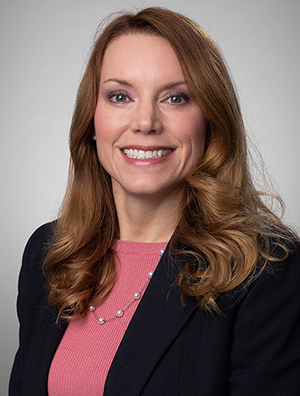Legislative Update: Finish Line Edition

If you find yourself needing a breather now that the 2024 Indiana General Assembly session is over, remember that you were advised in our week three update that this short session would be both a sprint and a marathon. Consider John Stephen Akhwari’s finish in the 1968 Summer Olympics men’s marathon in Mexico City. Early in the race, the Tanzanian Akhwari was knocked to the ground as a group of runners jockeyed for position. His knee was bloodied and dislocated in the fall, and most observers assumed he would withdraw from the race.
They were wrong. Akhwari hobbled into the Olympic Stadium an hour after the medal ceremony had concluded and limped one final lap around the track to reach the finish line. “My country did not send me 5,000 miles to start a race,” Akhwari said when asked about his grueling finish. “They sent me 5,000 miles to finish the race.” Grab some tissues and your scrapbooks, dear readers. It’s time for the Indy Chamber Legislative Update: Finish Line Edition.
It’s a bird! It’s a plane! It’s a….city bus?
After actor Christopher Reeve was paralyzed in a 1995 horseback riding accident, he reportedly maintained a grueling recovery regimen and hung a sign in his exercise room that read: “For everyone who thought I couldn’t do it… for everyone who thought I shouldn’t do it… for everyone who said, ‘It’s impossible’… see you at the finish line!”
The coalition behind the effort to establish an Economic Enhancement District (EED) in downtown Indianapolis and supporters of IndyGo’s Blue Line all know a thing or 10 about hearing “couldn’t, shouldn’t, can’t be done.” Both initiatives were in serious jeopardy from the start of session, and both benefitted from robust and cohesive support from many Indy Chamber members and allies. That unwavering support played a critical role in bringing all parties to the table to hash out compromises that saved the EED and the Blue Line.
We’ll be unpacking the details of those compromises for some time yet, but the survival of the EED and the IndyGo Blue Line are enormous wins for Indy Chamber members and the entire Indy region. Creating dedicated, sustainable resources for the heart of the capital city has been a goal for three decades. And IndyGo’s Bus Rapid Transit plans date back to the administration of former Indianapolis Mayor Greg Ballard and the Chamber’s first Leadership Exchange trip to Denver in 2008.
In other words, Indianapolis crossed the finish line of two ultra-marathons when the session ended Friday night, earning two hard-fought wins. Ensuring state and local collaboration to invest in regional downtowns, roads and streets, and transformational projects that enhance Hosiers’ quality of life was the bedrock of Indy Chamber’s legislative priorities around “Place,” for 2024. We believe the survival of the EED and IndyGo’s Blue Line will pay dividends for the economic trajectory of Central Indiana for years to come.
We have to acknowledge the significant work of leaders at the Statehouse in clearing a path for these priorities to cross the finish line—stay tuned, we’ll be thanking them individually in coming updates. That said, as we look ahead to a long budget session in 2025, we’re mindful of the need to forge a spirit of compromise that prioritizes progress for the region and state and is running strong when the IGA reconvenes in January.
Can you write that on the board?
American author Carol Ann Tomlinson once wrote, “As educators, we need to understand that there is no finish line in our work.” Tomlinson was referring to the ever-evolving art and science of teaching; there’s no finish line because there are always new discoveries to be made.
The role of K-12 and higher education in preparing Indiana’s talent was a significant focus on the Indy Chamber’s 2024 legislative agenda. We’ve continued to support efforts to expand apprenticeships and other work-based learning options for Hoosier high-school students, such as those contained in HB 1001 and HB 1243.
Addressing our state’s need for high-quality, affordable childcare is also key to growing our workforce. We were glad to see legislators make some moves in that direction during this session, taking up Governor Holcomb’s call to loosen some age restrictions for childcare workers. Lawmakers also expanded eligibility for childcare subsidies for childcare workers with children and increased the number of children that may be cared for by unlicensed home-based childcare providers, from five to seven.
We had hoped IGA members would continue to remove barriers to postsecondary enrollment by allowing undocumented students to qualify for residential tuition at Indiana state-supported universities. However, bills looking to do just that were barely allowed off the starting blocks by legislative leaders and ultimately died.
Given Indiana’s estimated pool of 50,000 undocumented high school students in the state, it seems short-sighted to not offer these young people who graduate from Indiana high schools the same in-state tuition rate paid by their peers, supporting them on the path towards success and contribution to Hoosier communities. There are times when the immigration debate seems to be another race in which there seems to be no finish line in sight.
Run for the Roses
The late NCAA coach Rick Majerus won more than 70% of his games, but when it came to March Madness, Kentucky always seemed to have his number. The Utah Utes lost to the Wildcats in the 1996 Sweet 16, the 1997 Elite Eight, and in the 1998 national title game. After the 1998 loss, Majerus told the papers, “When I die, they might as well bury me at the finish line at Churchill Downs so they can run over me again.”
The debate on healthcare cost has left representatives of various stakeholders in the healthcare system—including companies and individuals—feeling about the same. In 2024, Indy Chamber prioritized the need to drive the Indiana healthcare market toward value-based care to ensure high-quality health outcomes and competitive costs. Lawmakers appear to be taking the issue seriously, but we didn’t see a lot of progress this session in terms of legislative outcomes or improving the tenor of the debate.
However, not all solutions are forged in the Statehouse. Last month, several Indiana employers, universities, and health care organizations—including the Indy Chamber—joined forces to reduce healthcare costs and maintain a healthy workforce. The Indiana Business Health Collaborative, led by former U.S. Representative Luke Messer, launched in February.
The Indy Chamber looks forward to working with the collaborative to improve healthcare outcomes while reigning in costs, and we anticipate the IGA will devote significant energy to these issues in the 2025 session. Our hope is that the cooperative tone of the dialogue led by the Indiana Business Health Collaborative will carry over into policy discussions at the IGA. If we’re lucky, no one ends up feeling like they were stampeded by a bunch of racehorses.
Wave that checkered flag
The checkered flag is the international sign for the conclusion of an auto race. It also happens to be the dress code for Indianapolis—the largest city in the state—every May. We mention this in the hope that the current Statehouse infringement into the governing of cities and towns has reached its conclusion at this year’s Sine Die.
As perennial policy pontificator, Michael Hicks pointed out a few days ago in the Indy Star, “almost nine in 10 Hoosiers live within 20 minutes of a metropolitan area.” The upside of this, Hicks said, is that “almost anyone can access urban labor markets, urban amenities, and public services in cities.” The bottom line: growing cities and metros matter because that’s where most Hoosiers live, work, and play.
The General Assembly will have an opportunity to make transformational investments in cities and towns in the 2025 budget session. That’s an important consideration as lawmakers think through potential changes to Indiana’s tax climate, and—we would urge—especially its municipal tax policies. Indiana must ensure its tax structure remains attractive to businesses and corporate investment. But to attract employees for those businesses, municipal units must have the support and flexibility to invest in the quality-of-life workers prioritize and demand.
As we look ahead to the 2025 session, we’d all do well to consider the advice of leadership expert John C. Maxwell: “The point of leading is not to cross the finish line first. It's to take people across the finish line with you.”
Member Stories

Indianapolis Attorney Amanda Morton Joins Quarles & Brady Business Law Group As Partner

Join Our Newsletter
Quick Connect Links


